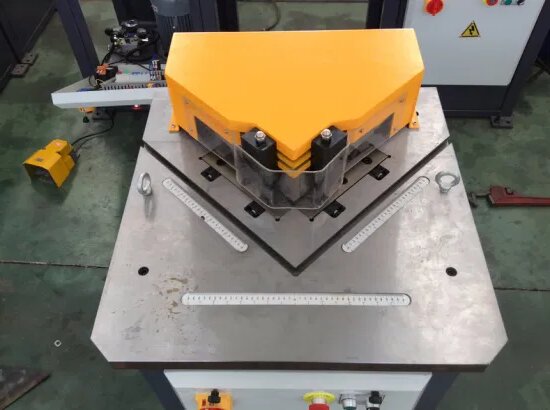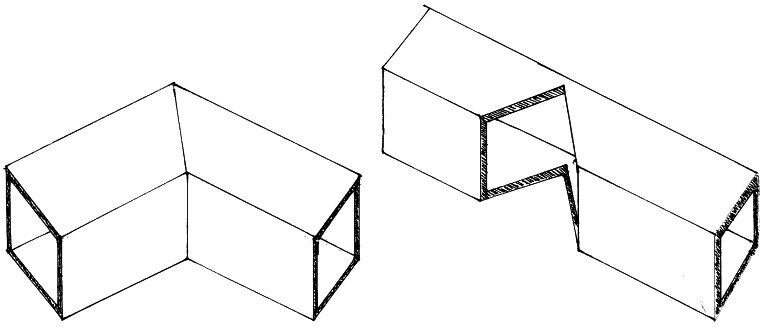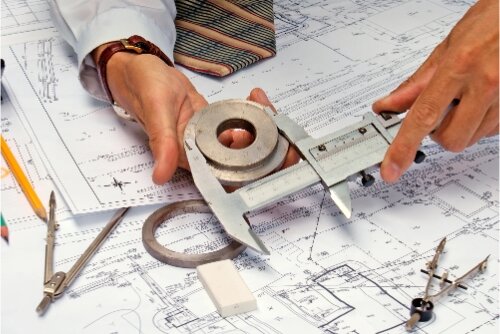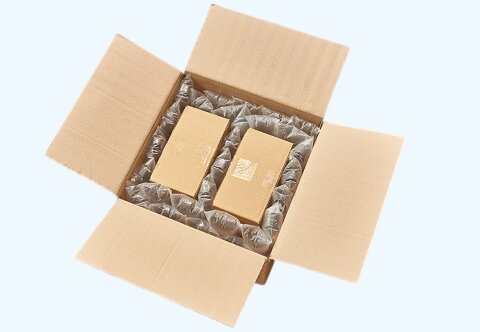As equipas de produção enfrentam uma pressão constante para fornecer peças precisas e duradouras, reduzindo simultaneamente os custos e o tempo de produção. Os erros de entalhe de chapa metálica conduzem a desperdício de material, atrasos nos projectos e problemas de qualidade que prejudicam o resultado final. Com técnicas de entalhe corretas, os fabricantes reduzem as taxas de desperdício em 35% e aceleram o tempo de montagem em 40%.
O entalhe de chapas metálicas cria cortes e aberturas precisas em chapas metálicas, permitindo que as peças se encaixem perfeitamente durante a montagem. As modernas máquinas de entalhar CNC atingem uma precisão de 0,001 polegadas, permitindo montagens complexas em indústrias desde a aeroespacial à eletrónica de consumo. A escolha do método de entalhe tem um impacto direto na qualidade do produto e na eficiência do fabrico.
As secções seguintes exploram técnicas de entalhe essenciais, considerações sobre materiais e aplicações do mundo real que impulsionam a excelência do fabrico. Iremos examinar a forma como o entalhe correto aumenta a produtividade, mantendo simultaneamente padrões de qualidade rigorosos.
O que é o entalhe de chapa metálica?
O entalhe refere-se ao corte de secções específicas da chapa metálica, normalmente em cantos ou arestas. O processo cria espaços deliberados que facilitam flexãoUm entalhe bem executado reduz a concentração de tensões e reforça a integridade estrutural. Um entalhe bem executado reduz a concentração de tensões e reforça a integridade estrutural.
Vantagens do entalhe no fabrico
O sucesso no fabrico de metais depende da eficiência da produção, do controlo de qualidade e da gestão de custos. As técnicas de entalhe adequadas melhoram diretamente estes indicadores-chave de desempenho nas operações de fabrico.
Melhoria da eficiência
O entalhe acelera os processos de montagem e reduz os custos de mão de obra:
- 50% preparação mais rápida da junta
- Racionalizado conjunto sequências
- Redução das operações secundárias
Precisão e consistência
A moderna tecnologia de entalhe proporciona resultados repetíveis em todas as séries de produção:
- Tolerâncias de ±0,001 polegadas
- Folgas uniformes entre juntas
- Tolerâncias de dobragem precisas
- Encaixe consistente das peças
Redução de resíduos e eficiência de custos
As práticas estratégicas de entalhe reduzem os custos operacionais através de:
- 25% menos desperdício de material
- Menos peças rejeitadas
- Taxas de retrabalho mais baixas
Desvantagens do entalhe na metalurgia
A compreensão das limitações ajuda a otimizar a seleção de processos e a evitar problemas de fabrico.
Tensões e deformações dos materiais
As restrições físicas afectam a integridade do material:
- Endurecimento de arestas
- Riscos de microfissuras
- Distorção térmica
- Efeitos de endurecimento do trabalho
Custo
O investimento inicial e as despesas operacionais incluem:
- Aquisição de equipamento ($5,000-$50,000)
- Requisitos de manutenção
- Treinamento de operadores
- Substituição de ferramentas
Limitações com materiais espessos
A espessura do material afecta as capacidades do processo:
- Restrições de espessura máxima
- Requisitos de energia
- Taxas de desgaste de ferramentas
- Redução da velocidade de processamento

Como funciona o processo de entalhe de chapa metálica?
Através de operações mecânicas controladas, o processo de entalhe de chapas metálicas transforma a matéria-prima em componentes entalhados com precisão. Cada passo baseia-se no anterior para garantir resultados consistentes e de alta qualidade.
Preparação de Materiais
A gordura, os óleos e os contaminantes da superfície são removidos através de processos de limpeza específicos. Os técnicos marcam pontos de referência chave utilizando ferramentas especializadas e posicionam o material de acordo com especificações pré-determinadas.
Seleção e configuração de ferramentas
Os operadores selecionam as matrizes e os punções adequados com base nas propriedades do material e nos requisitos do projeto. Os procedimentos de configuração incluem verificações de alinhamento, ajustes de folga e cortes de teste em material de amostra.
Sequência de corte
Os operadores posicionam a chapa metálica contra os batentes ou dispositivos de fixação para manter a orientação correta. Os sistemas de acionamento são ligados suavemente, aplicando força controlada para criar entalhes limpos.
Verificação da qualidade
As equipas de qualidade verificam o ajuste e a função adequados, documentando os resultados para controlo do processo. O feedback rápido permite ajustes imediatos quando necessário para manter os padrões de produção.
Técnicas e métodos de entalhe de chapas metálicas
A seleção das técnicas de entalhe tem impacto na qualidade do produto final, na velocidade de produção e no custo. Cada método serve requisitos de design e cenários de produção específicos.
Entalhe em ângulo reto
O entalhe em ângulo reto cria cortes de 90 graus nos cantos das chapas metálicas. Esta técnica adequa-se a aplicações que requerem juntas quadradas e curvas perpendiculares. O processo remove quadrados precisos de material, normalmente variando de 0,5 a 4 polegadas por lado.
Entalhe em V
O entalhe em V produz cortes angulares para curvas e uniões complexas. O processo cria entalhes em forma de V em ângulos entre 30 e 135 graus. Esta flexibilidade permite vários ângulos de dobragem sem sobreposição de material.
Mordiscagem Entalhe
O corte por arranque utiliza cortes menores e consecutivos para criar padrões de entalhe complexos. O método oferece flexibilidade para formas e curvas irregulares. Cada dentada remove 0,1 a 0,25 polegadas de material por curso.
Entalhe de arestas e cantos
O entalhe de arestas modifica as arestas da chapa para juntas e separadores. O entalhe de canto remove material nas intersecções para facilitar a dobragem e a montagem. Ambos os métodos requerem um controlo preciso da profundidade e da largura.
Comparação de técnicas de entalhe
| Técnica | Velocidade | Precisão | Custo | Gama de materiais (polegadas) |
|---|---|---|---|---|
| Ângulo direito | Alto | ±0.005" | Médio | 0.02-0.25 |
| Entalhe em V | Médio | ±0.003" | Alto | 0.01-0.19 |
| Mordiscando | Baixo | ±0.007" | Baixo | 0.01-0.12 |
| Arestas/Cantos | Alto | ±0.004" | Médio | 0.02-0.19 |
Materiais comuns utilizados no entalhe
A escolha do material afecta os parâmetros de entalhe, a seleção da ferramenta e a qualidade do produto final. Diferentes metais requerem velocidades de corte, geometrias de ferramentas e ajustes de pressão específicos.
Alumínio
Devido à sua natureza mais macia, o alumínio oferece excelentes caraterísticas de entalhe. As velocidades de processamento atingem 200 cursos por minuto com um desgaste mínimo da ferramenta. A baixa densidade e a elevada formabilidade do metal tornam-no ideal para padrões de entalhe complexos.
Especificações típicas:
- Faixa de espessura: 0.020″ - 0.250″
- Resistência à tracção: 27-45 ksi
- Vida útil da ferramenta: Mais de 50.000 ciclos
Aço (macio, inoxidável, galvanizado)
As variantes de aço exigem ferramentas robustas e ajustes precisos da máquina. O aço macio processa-se mais rapidamente do que o aço inoxidável, enquanto o aço galvanizado exige uma atenção especial à integridade do revestimento.
Parâmetros de processamento:
- Aço macio: 100-150 cursos/min
- Inoxidável: 60-90 cursos/min
- Galvanizado: 80-120 cursos/min
Titânio e outras ligas
As ligas especializadas necessitam de um controlo cuidadoso dos parâmetros de corte. Estes materiais requerem frequentemente velocidades reduzidas e estratégias de arrefecimento melhoradas.
Especificações de corte:
- Velocidade: 40-60 cursos/min
- Dureza da ferramenta: 60-62 HRC
- Líquido de refrigeração: Necessário
Compreender os ângulos e a profundidade do entalhe
Cálculo dos ângulos de entalhe
O cálculo correto do ângulo garante dobras e encaixes precisos. A fórmula tem em conta a espessura do material e o ângulo de curvatura pretendido:
Ângulo de entalhe = Ângulo de curvatura - (2 × fator K × espessura do material)
Controlo da profundidade e precisão no entalhe
O controlo da profundidade depende de:
- Sistemas de posicionamento digital
- Paragens calibradas
- Monitoramento em tempo real
- Inspeção regular das ferramentas
Como Perfuração de chapa metálica e operação de entalhe Comparar?
Fabrico de chapas metálicas utiliza a perfuração e o entalhe, mas cada um deles serve necessidades de fabrico distintas. Compreender as suas diferenças ajuda a otimizar os processos de produção e a obter melhores resultados.
Operações de perfuração:
- Cria orifícios internos
- Taxas de produção mais elevadas
- Gama de materiais mais alargada
- Padrões mais complexos
Caraterísticas de entalhe:
- Modifica apenas as arestas
- Necessidades de maior precisão
- Custos de ferramentas mais baixos
- Melhor para protótipos

Como o entalhe de chapa metálica se compara ao entalhe de tubo?
Estes dois métodos de entalhe servem diferentes necessidades de fabrico. Embora partilhem princípios básicos, as suas aplicações e requisitos técnicos diferem significativamente.
Entalhe de chapa metálica:
- Processa materiais planos
- Velocidades de produção mais elevadas
- Necessidades de configuração mais simples
- Custos de ferramentas mais baixos
Entalhe do tubo:
- Manipula perfis 3D
- Geometria mais complexa
- Necessidades especiais de fixação
- Especificações de maior precisão
Aplicações industriais do entalhe de chapas metálicas
O entalhe de chapas metálicas é um processo fundamental em sectores de produção significativos. Cada indústria utiliza técnicas de entalhe especializadas para satisfazer requisitos de produtos e padrões de qualidade únicos.
Entalhe na indústria automóvel
O sector automóvel depende do entalhe preciso dos componentes dos veículos e dos elementos estruturais:
- Painéis de carroçaria com requisitos de adaptação exactos
- Barras do chassis e componentes do chassis
- Componentes do sistema de escape
- Fabrico de suportes e fixações
- Estruturas de suporte interiores
Aplicações aeroespaciais do entalhe
O fabrico aeroespacial exige um entalhe ultra-preciso para componentes críticos:
- Conjuntos da caixa do motor
- Juntas dos componentes da asa
- Ligações dos painéis da fuselagem
- Componentes da superfície de controlo
- Elementos estruturais do quadro
Entalhe para eletrónica e electrodomésticos
Os fabricantes de eletrónica de consumo e de aparelhos utilizam o entalhe para:
- Fabrico de armários
- Sistemas de ventilação
- Caminhos de passagem de cabos
- Suportes de montagem de componentes
- Estruturas de apoio internas
Utilizações na construção e na arquitetura
As aplicações na construção civil incluem:
- Condutas de AVAC
- Componentes da estrutura de aço
- Painéis metálicos decorativos
- Sistemas de calhas de chuva
- Suportes de suporte
Factores a considerar na máquina de entalhar chapa metálica
A seleção de uma máquina de entalhar adequada afecta a qualidade da produção, a eficiência e os custos do projeto. Uma seleção brilhante da máquina começa com a análise dos requisitos técnicos e das exigências de produção. Abaixo estão os factores críticos que cada fabricante deve avaliar.
A máquina deve estar segura
A segurança da máquina começa com uma estabilidade mecânica robusta e sistemas de montagem sólidos. Os pontos de ancoragem fixos impedem o movimento durante o funcionamento, enquanto o amortecimento das vibrações reduz o stress operacional. As superfícies anti-derrapantes e os pés niveladores mantêm o alinhamento perfeito durante os ciclos de corte pesados.
Proteção da zona de corte
Os escudos e protecções de segurança formam barreiras críticas em torno das zonas de corte. As barreiras físicas impedem o contacto do operador com peças móveis. Os painéis de visibilidade clara permitem a monitorização do processo, mantendo a proteção. Os sensores electrónicos interrompem o funcionamento se as zonas de segurança estiverem comprometidas.
Mecanismo de corte
O sistema de corte proporciona um controlo preciso da força através de sistemas mecânicos ou hidráulicos avançados. As ferramentas afiadas e endurecidas criam entalhes limpos sem deformação do material. As velocidades de curso ajustáveis correspondem aos requisitos do material. Os sistemas de acionamento direto minimizam os pontos de desgaste mecânico.
Regulador de curso
Os mecanismos de ajuste do curso permitem um controlo preciso da profundidade e da pressão de corte. Os controlos de ajuste rápido permitem mudanças rápidas entre tipos de material. As leituras digitais apresentam as posições exactas do curso. As definições de memória armazenam configurações padrão para uma configuração rápida.
Conclusão
O entalhe de chapas metálicas transforma o fabrico através da precisão, eficiência e versatilidade. O entalhe reduz o tempo de produção e aumenta a qualidade quando associado a técnicas e equipamentos adequados. À medida que a tecnologia avança, o entalhe continua a evoluir, oferecendo aos fabricantes novas formas de responder a desafios de design complexos.
Para além do entalhe de chapas metálicas, oferecemos soluções abrangentes de fabrico personalizado para todas as suas necessidades. Com equipamento avançado e uma equipa técnica profissional, podemos satisfazer as suas diversas necessidades em Maquinação CNC, fabrico de chapas metálicase muito mais. Escolha-nos para tornar o seu processo de fabrico mais eficiente e contínuo.
FAQs
Qual é o principal objetivo do entalhe?
O entalhe cria principalmente recortes precisos em chapas metálicas para facilitar as operações de dobragem, união ou montagem. Este processo permite limpar cantos, juntas e ligações estruturais no fabrico de metal, mantendo a integridade do material.
Qual é o nome do entalhe na chapa metálica?
Os tipos de entalhe mais comuns incluem entalhes em V, entalhes quadrados e entalhes de raio. Cada um serve necessidades de design específicas - os entalhes em V adequam-se a curvas angulares, os entalhes quadrados funcionam para juntas de 90 graus e os entalhes de raio reduzem a concentração de tensão.
O entalhe pode ser utilizado em todos os tipos de metais?
A maioria dos metais suporta operações de entalhe, mas os parâmetros variam consoante o material. O alumínio, o aço e o aço inoxidável funcionam bem com ferramentas padrão. As ligas exóticas requerem ferramentas especializadas e velocidades de corte ajustadas para obter resultados óptimos.
Quais são as limitações do entalhe CNC?
O entalhe CNC enfrenta restrições em termos de espessura do material, velocidade de corte e desgaste da ferramenta. A espessura máxima é normalmente de 1/4 de polegada para máquinas padrão. Os padrões complexos aumentam o tempo de ciclo e os materiais de elevada resistência aceleram o desgaste da ferramenta.
Como é que o entalhe afecta a resistência e a durabilidade do metal?
O entalhe correto mantém a integridade estrutural durante a remoção do material. Os cortes limpos minimizam a concentração de tensões e o endurecimento por trabalho. No entanto, uma má técnica ou uma seleção incorrecta de ferramentas pode criar pontos fracos ou zonas de falha prematura.
Olá, chamo-me Kevin Lee

Nos últimos 10 anos, tenho estado imerso em várias formas de fabrico de chapas metálicas, partilhando aqui ideias interessantes a partir das minhas experiências em diversas oficinas.
Entrar em contacto

Kevin Lee
Tenho mais de dez anos de experiência profissional no fabrico de chapas metálicas, especializando-me em corte a laser, dobragem, soldadura e técnicas de tratamento de superfícies. Como Diretor Técnico da Shengen, estou empenhado em resolver desafios complexos de fabrico e em promover a inovação e a qualidade em cada projeto.




